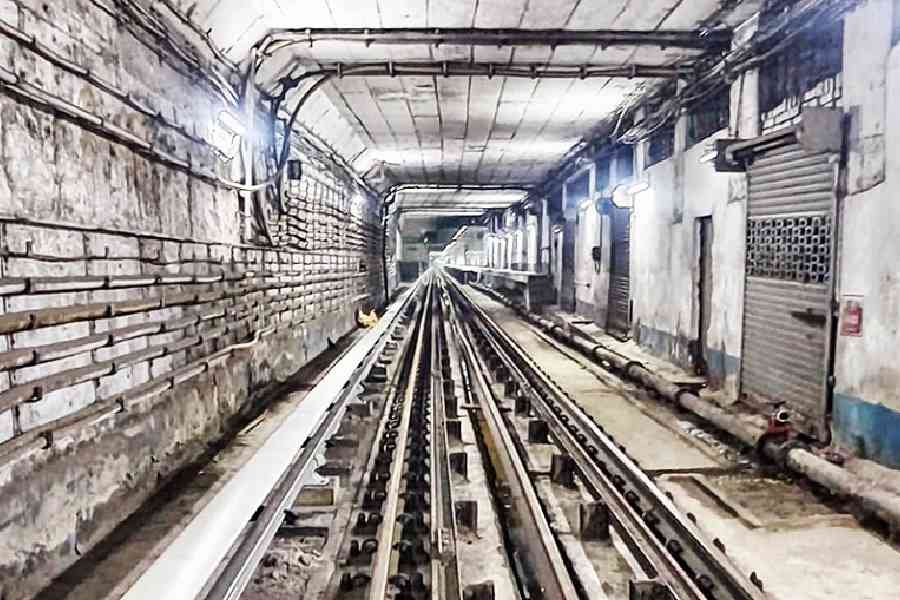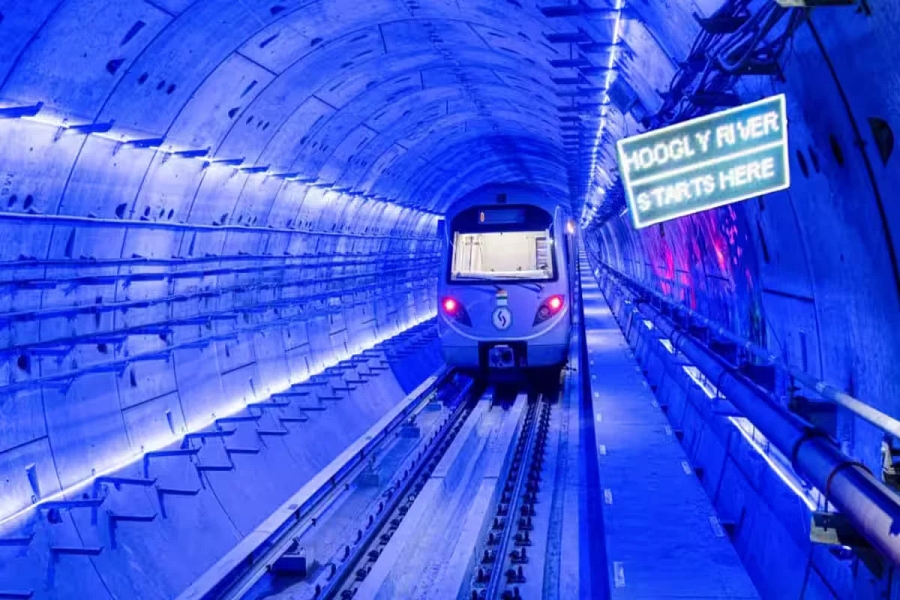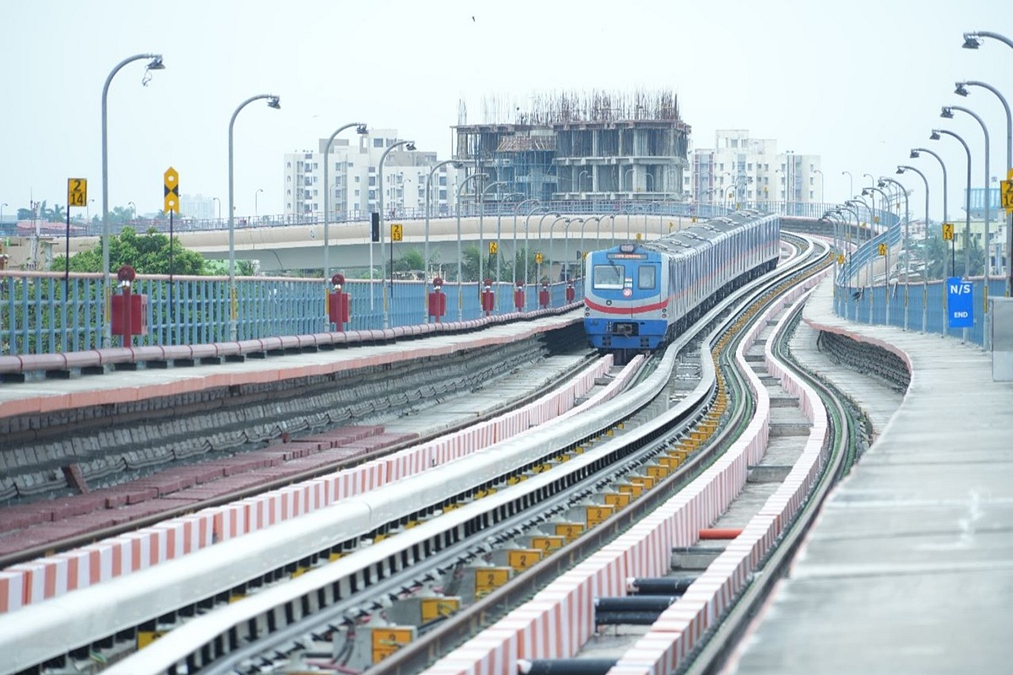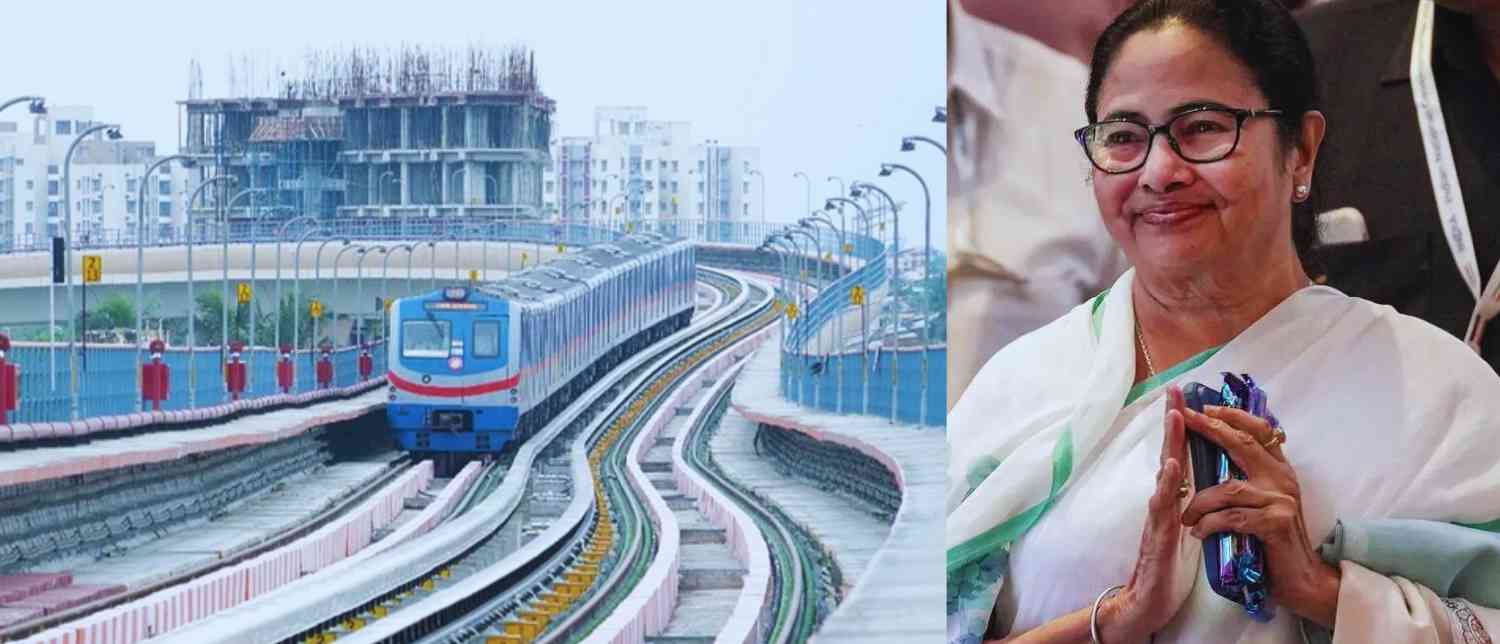Kolkata Metro’s Blue Line, which has been serving the city for over 40 years, is set for a major upgrade with a ₹500 crore project focused on tunnel repair and signaling improvements. This investment comes as part of efforts to ensure safer, more efficient, and environmentally friendly metro services for the citizens of Kolkata.

The Blue Line, also known as the North-South corridor, is the oldest underground metro stretch in India. Its tunnel infrastructure, some parts of which have been operational since the mid-1980s, has begun showing signs of aging. Problems such as track subsidence, water seepage through tunnel walls, damaged pillars, and worn platforms have been identified between Tollygunge and Dum Dum stations. These issues have forced the metro to reduce train speeds to an average of 55 km/h instead of the optimal 80 km/h for safety reasons. Moreover, water seepage has caused operational disruptions on several occasions during heavy rains.
The upcoming overhaul will begin after the rebuilding of the cracked Up platform at the southern terminal, Kavi Subhash (New Garia) station. This reconstruction is expected to take about nine months. After completion, the ₹500 crore tunnel rehabilitation will cover the 16.45 km underground corridor between Tollygunge and Dum Dum. The plan involves repairing structural cracks, sealing water leaks, replacing damaged pillars, and upgrading platforms. Alongside structural repairs, the signaling system will be modernized to allow trains to run more frequently and safely, improving overall service efficiency.

In addition to tunnel repairs and signaling upgrades, the Kolkata Metro is also actively replacing the traditional steel third rail with a modern aluminium third rail on the Blue Line. This component powers the trains, and switching to aluminium is expected to save significant energy by reducing voltage drops and electrical losses. This upgrade, slated for completion by August 2025, will reduce operational costs and lower carbon emissions by approximately 50,000 tons over its lifetime, contributing to a greener and more sustainable transportation system.
Public response to these developments has been cautiously optimistic. Regular commuters understand the necessity of these upgrades for safety and reliability but are also mindful of potential disruptions during the construction phases. The Kolkata Metro authorities have assured passengers that work will be done while keeping the metro operational to minimize inconvenience, although the upgrades may take several years to complete fully.

The ₹500 crore investment for the Blue Line’s tunnel and signaling system is a critical step in preserving Kolkata’s pioneering metro network. This upgrade not only addresses urgent safety concerns but also enhances operational efficiency and environmental sustainability. For a city heavily reliant on metro transport, these improvements promise a safer and more reliable journey for millions while preparing the infrastructure for future demands.
Through this project, Kolkata Metro is balancing the challenge of modernizing an aging system without disrupting daily commuters, setting an example of how legacy urban infrastructure can be responsibly maintained to meet contemporary standards and expectations.
With inputs from agencies
Image Source: Multiple agencies
© Copyright 2025. All Rights Reserved. Powered by Vygr Media.





















